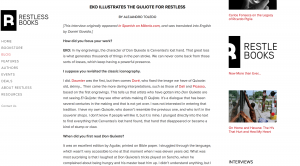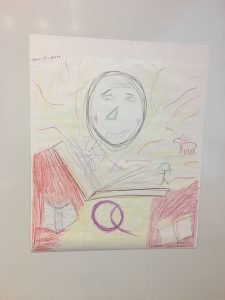One of the things that my group had to take into consideration most during this activity was the placement of our quotation on the page from “My Name is Red”. While we haven’t actually made the print yet, we had to decide if we should center some of the lines or keep them aligned all the way to the left side. It made me think about how the way in which something is printed can affect its reading and interpretation. Top of the page or bottom, positioned toward the left or centered, quotes can be given different levels of importance. We decided that we will probably place the quote all the way to the top left, so that it catches a viewer’s attention immediately but does not necessarily dictate how they interpret picture that we will draw below it in the way that a centered quote might. We thought putting it to the side may imply a more loose or even fluid connection between the two ideas.
Our quote from “My Name is Red” is: “Try to discover who I am from my choice of words and colors, as attentive people like yourselves might examine footprints to catch a thief.”
The connection between this quote and the picture we plan to draw is the concept of differing perspectives, opinions, and writing/artistic styles of each of the characters that we read the narratives of throughout the novel.





